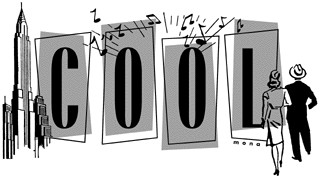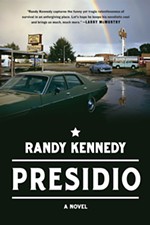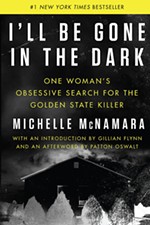Birth of the Cool: Beat, Bebop, and the American Avant-Garde
Lewis MacAdams
Reviewed by Dale Smith, Fri., April 20, 2001

Birth of the Cool
Beat, Bebop, and the American Avant-Gardeby Lewis MacAdams
Free Press, 288 pp., $27.50
By the time I was born in the late 1960s, the term "cool" already stood for the quiet defiance and restrained desire that marked it for earlier generations who frequented jazz clubs and taverns like Birdland in New York City. Growing up outside Dallas, I didn't know about bebop or even the Beats, but that didn't matter. The idea of cool had been filtered, extending far beyond its early contexts in jazz circles of the Forties and Fifties. Cool for me was a given, a statement and testament of oneself. For my friends and me, cool was a way to get along, to not impose crippling histrionic gestures on each other. It was about a tight-lipped nonchalance and silent defiance in a world run by people much older and more uptight than we ever imagined ourselves to be.
In Birth of the Cool, poet, journalist, and filmmaker Lewis MacAdams goes beyond our conceptions of cool to chronicle its historic deliverance from small mid-century art vanguards. Before that time, "'cool' was in use among African-Americans in Florida as early as 1935," MacAdams tells us. But it wasn't until the era of bebop that the term really stuck, widening in usage among black musicians during and just after the Second World War. MacAdams understands the slippery nature of his subject, and he tells us that "anybody trying to define 'cool' quickly comes up against cool's quicksilver nature. As soon as anything is cool, its cool starts to vaporize." "Cool" was also about self-protection, "the ultimate revenge of the powerless. Cool was the one thing that the white slaveowner couldn't own. Cool was the one thing money couldn't buy. At its core, cool is about defiance."
Cool hit full stride around 1945, "taking place in the shadows, among marginal characters, in cold-water flats and furnished basement rooms." Many jazz musicians, poets, performers, and artists in New York existed as outsiders in a newly victorious world power. The Cold War in coming years would intensify social pressures, forcing artists into a quiet battle between art created at society's margins and an explosive machinery of fame, bestowed on unknown artists by the sudden attention of the press and influential critics.
Stories fuel this book; MacAdams spins a narrative of cool by focusing on key figures of mid-century art, music, and literature. He finds in legend and lore the traits of cool, looking first at the black musicians closest to its roots, then at the quick transformation of cool from underground bohemian code to a mainstay feature of national life. It was, after all, an African-American phenomenon, and whites have always been drawn to the power of black art. MacAdams also acknowledges heroin use among musicians, not to moralize against it in the manner of Ken Burns' recent documentary, nor to uplift it as a kind of inspiring daemon, but to show its use and the underground culture that developed around it. Sharing the words of trumpeter Red Rodney, MacAdams tells us that "Hipsters used heroin. Squares didn't. Heroin gave us membership in a unique club, and for this membership we gave up everything else in the world. Every ambition. Every desire."
"If cool has been trivialized, it's also been globalized," MacAdams writes. "As English has spread around the earth, so has cool. To use the word 'cool' well is to partake of a central ritual of global culture as profound and as universal as a handshake." With few traces of sentiment, this history behind the cool is a record of the resilient and adaptable psyche of a nation. MacAdams cuts to the chase to show us his version of the cool, and, by extension, also where we come from.
Lewis MacAdams will be at Barnes & Noble Guadalupe on Monday, April 23, at 7pm.








